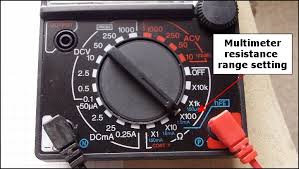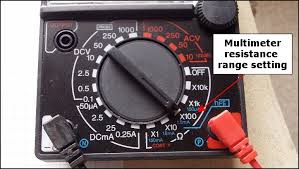Steps on measuring Voltages:
1. Identify the type of Volltage we ought to measure such as Alternating Current Voltage (ACV) or Direct Current Voltages (DCV).
2. Set the Range Selector knob on it’s proper position with respect to the type of Voltage and always aim the best value of range to use .
3.Touch the multimeter probes to the item you wish to measure and if it is DCV be sure on it’s polarity with respect to the testprobe and terminal of source
4. Read the position of the needle on the scale of Voltages Scale
Be Careful on Measuring Voltages…



















